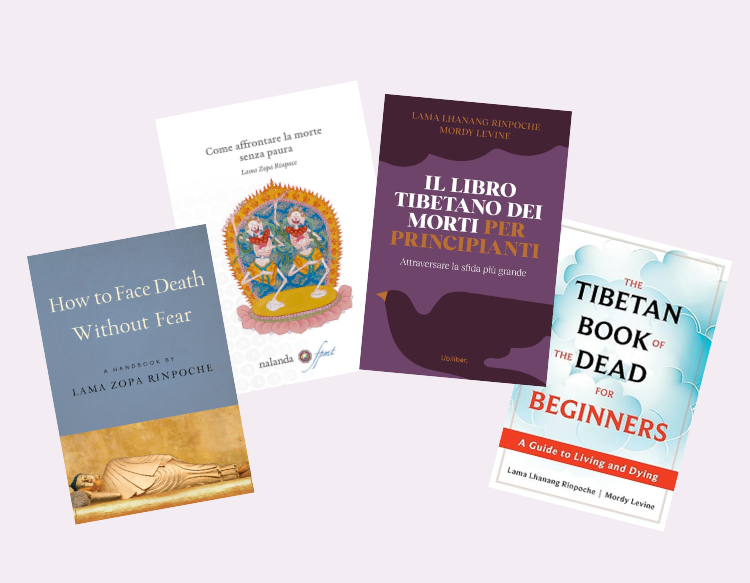The recommended reading concerns two important books.
How to Face Death Without Fear by Lama Zopa Rinpoche, published by Wisdom Publications, is suitable for an audience of Buddhist practitioners, while
The Tibetan Book of the Dead for Beginners by Lama Lhanang Rinpoche, Mordy Levine, and published by Sounds True, as indicated in the title itself, is better suited for non-practicing readers. Below are the respective editorial sheets that will provide more details to explore the content, with the hope of a nourishing read regardless of the stage of life and the conditions we find ourselves in.
Lama Zopa Rinpoce
How to Face Death Without Fear
Wisdom Publications
For years, Lama Zopa Rinpoche envisioned a practical book to inform students on how to help their loved ones have a beneficial death: How to Face Death Without Fear has been compiled with years of Rinpoche's teachings and lovingly edited by the Venerable Robina Courtin.
Rinpoche provides detailed advice on how to help our loved ones prepare for the end of their lives with courage, acceptance, and a mind free from fear. With great care, he explains what to do in the months, weeks, and days leading up to death, how to handle the moment itself, what to do after the breath has ceased, and finally, what to do after the mind has left the body. Rinpoche provides the appropriate mantras, prayers, and meditations for each stage. This new edition of How to Die Happy makes it easy to find the right practice at the right time.
It is an essential reference for Tibetan Buddhist caregivers, hospice workers, and chaplains. But, as Rinpoche emphasizes, it is not just for those who work with the dying; it is instruction that we all need to ensure that the death of a loved one — and our own — is joyful and meaningful.
Lama Lhanang Rinpoche, Mordy Levine
The Tibetan Book of the Dead for beginners – A Guide to living and Dying
Sounds True
Designed for a world that keeps death at a distance, this brief and moving guide makes the timeless wisdom of the Tibetan Book of the Dead (Bardo Thodol) accessible. How can we live fully? How can we face our inevitable death? How can we help our loved ones do the same? Within these pages lies a possible answer to rediscover the meaning of life by reflecting on its end, to bring comfort to our fears and to those of people approaching the end of life. In addition to being a careful and profound reading of a classic of Tibetan Buddhism with an eternal resonance, it offers practical guidance on what to expect when dying and how to care for ourselves and our loved ones in those crucial moments. Through clear and profound language, this book reaches contemporary readers, regardless of culture or religion, and it also provides an opportunity for growth and transformation for each of us.



